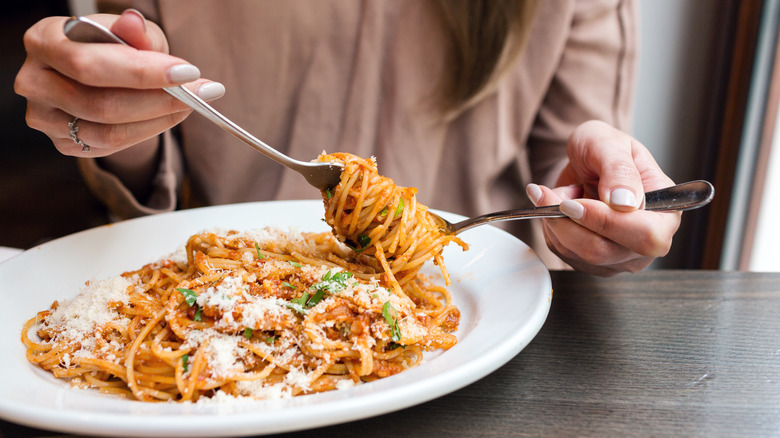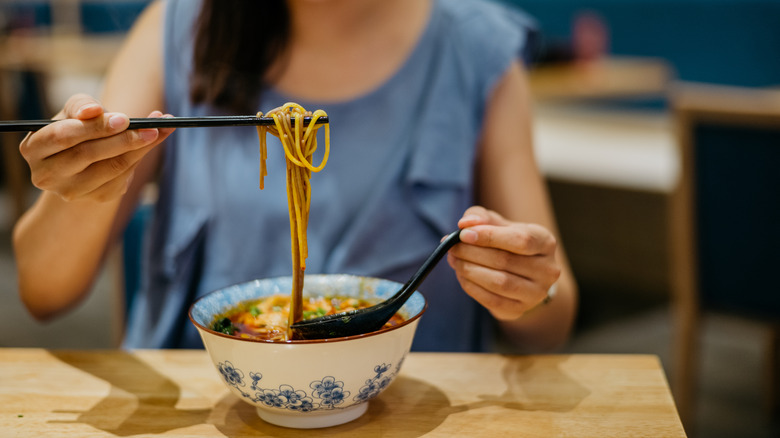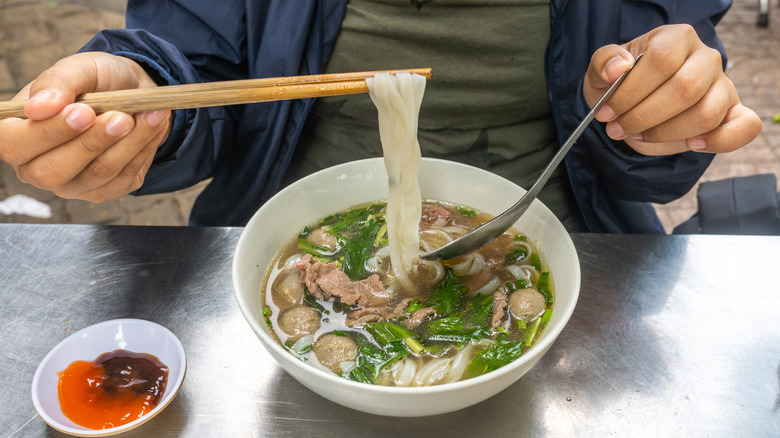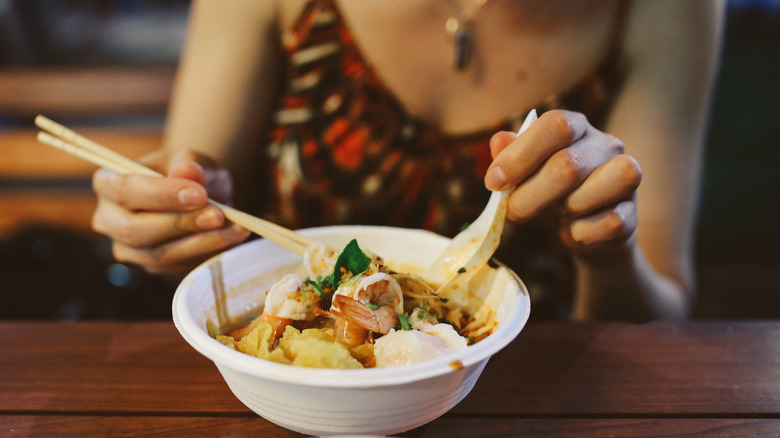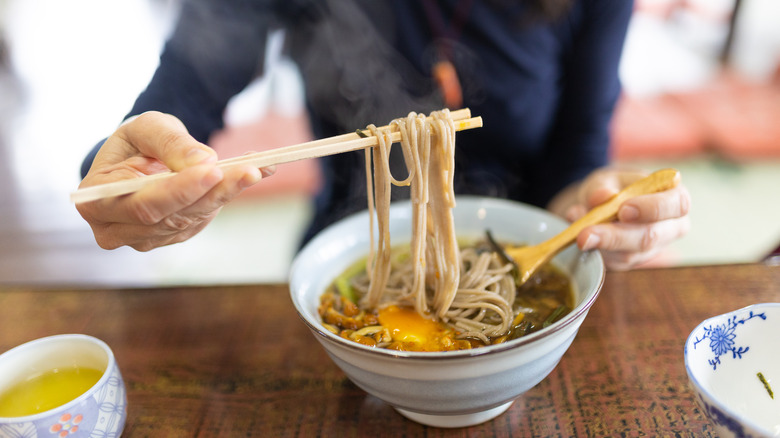The Right Way To Eat Noodles In Different Parts Of The World
There's nothing quite like biting into a meal of flavorful and hearty noodles. Whether you enjoy them warm and doused in alfredo sauce, a savory version in hot ramen soup, or prefer them chilled with miso and sesame flavoring — there is truly a style for almost everyone. However, when it comes to the etiquette of how to properly eat this popular ingredient, things can get a bit murky depending on where you are.
That's because it largely depends on what style of dish you're eating and what part of the world you're in. Some cultures welcome chopsticks and loud slurping to show you're enjoying your food, while others are used to a more demure approach like wrapping your noodles quietly around your fork. To help you in the quest to understand the right way to consume them we turned to experts in Italian, Chinese, Vietnamese, Thailand, and Japanese cuisine to help steer you in the right direction.
Italy
Italians twirl long kinds of pasta like spaghetti and linguine, making a "small nest" with their fork, says Enrico Bazzoni, a native Italian and a chef with the Italian Culinary Institute for Foreigners, a nonprofit institution that promotes Italian culinary traditions. Viana La Place, author of "My Italian Garden: More than 125 Seasonal Recipes from a Garden Inspired by Italy" and other books on Italian cooking, explains that twirling helps "capture the little pieces in the sauce" like capers and pine nuts.
Unlike some Americans, Italians nowadays typically don't place the tines of the fork against the bowl of a spoon as they coil up their pasta, Bazzoni says. "Traditionally people did use a spoon and fork, but in the last five or 10 years, most people have stopped using the spoon. They realized it wasn't necessary, or it just fell out of fashion."
China
The Chinese pick up noodles with their chopsticks, but they don't bother twirling, says Corinne Trang, author of "Essentials of Asian Cuisine: Fundamentals and Favorite Recipes." When eating noodle soups, you hold your chopsticks in one hand and your soup spoon in the other, Trang says. Take a spoonful of broth and pick up some noodles with your chopsticks. Deposit the noodles in your spoon with the broth, and then eat the contents of the spoon, using your chopsticks to help the noodles into your mouth. That way you can enjoy the broth and noodles simultaneously.
If you wish, you can also deliver the noodles straight to your mouth with your chopsticks, alternating mouthfuls of noodles with slurps of broth. Slurping is de rigueur among the Chinese for practical reasons. "It's a way of introducing cool air into your mouth to cool off the noodles and the broth if it's a noodle soup ... Chinese food is generally served hot, often served piping hot." Noodle dishes vary by region, but Trang says, "As far as eating them goes, it's all the same."
Vietnam
The Vietnamese eat noodles with chopsticks. When the noodles are in soup, they are eaten with the two-handed approach described above. Andrea Nguyen, author of "Into the Vietnamese Kitchen: Treasured Foodways, Modern Flavors," adds that with Vietnamese noodle soups like pho (noodles in beef broth), the one faux pas is to "squirt in gobs of hoisin or sriracha" before tasting the soup. "A well-crafted soup broth has simmered for hours or even overnight. If you add the other stuff as if it were ketchup, the soup becomes too sweet and too salty. It loses the delicate qualities of pho."
Thailand
Noodles are traditionally "street food, fast food," says David Thompson, author of "Thai Food," and are not consumed with "any sense of needing to be elegant or impress your neighbor." Use the two-handed approach with noodle soups and slurp if you need to, but don't make too much noise. According to Thompson, vigorous slurping is not the norm in Thailand. "Thais have an intrinsic elegance that prevents them from slurping too loud." Thais use a spoon and fork for noodle dishes other than soups.
Japan
Use the two-handed approach, and slurp with gusto. However, you won't insult the restaurant if you don't slurp, says Kumao Arai, a former manager at the now-closed Ramen Halu, a renowned noodle joint that was in San Jose, California. Some of his non-Japanese customers are shy about slurping, but when he explains its cooling effect, "they start practicing." And if you can, drain the last drops from the bowl. "We like to see customers pick up the bowl," says Arai, "because that's when they're drinking all of the soup."

